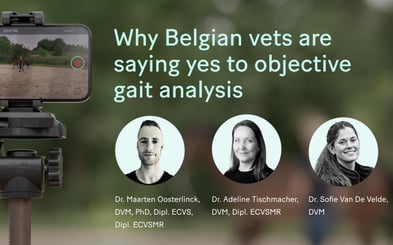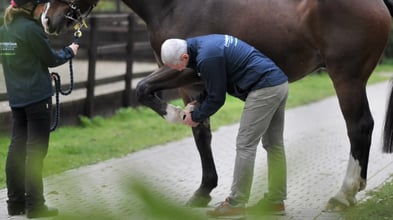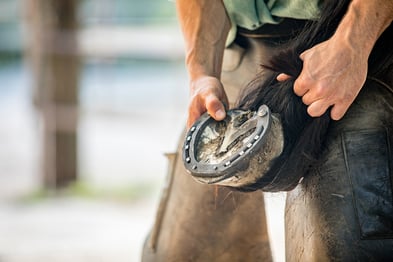Why Belgian vets are saying yes to objective gait analysis
Top Belgian equine veterinarians are clear: Objective gait analysis is becoming as essential as X-rays.

In the first episode of Sleip Talk, hosted by veterinarian and biomechanics researcher Elin Hernlund, we dive into what motion analysis can bring to equine care and how insights into biomechanics impact the way top riders work with their horses.
Our lineup includes veterinarian and biomechanics researcher Maria Terese Egnell, founder of Rider in Balance—a scientifically proven system aimed at enhancing horse-rider performance through rider balance development.
We're also joined by Grand Prix dressage rider Johanna Due-Boje and get to meet her treating veterinarian Johan Lenz. Riding school owner Charlotte Wettberg and her veterinarian Florian Lackner also give us a glimpse of how they are using motion analysis.
In addition to her work with Rider in Balance, Egnell is a sought-after speaker and clinician, sharing her insights at workshops, seminars, and conferences worldwide. She stresses the importance of analysing both horse and rider’s motion systematically, identifying root causes rather than symptoms.
“When we analyse asymmetry in horses, we look at two parameters of the horse that we know are scientifically validated. The vertical motion of the head and the pelvis. We know that those parameters are most important to look at. When it comes to riders, it’s actually more complex, we need to look at the whole system and take many more parameters into account.” says Maria Terese Engell
We talk about how insights from objective analysis and a “shared language” of data can help the team around the horse.
Dressage rider Due-Boje always strives to become a better horse person by getting to know her horses motion pattern better and working on her own performance as a rider.
“Working with these two systems, Sleip and Rider in Balance, I’m excited to see what the future holds. As I learn more about horse and rider’s biomechanics, I feel that I am even more on the right track to becoming a better rider and a better horse person.” says Johanna Due boje
You will also meet Johan Lenz, who plays a very important role in the team around Johanna Due-Boje as her treating vet and veterinarian Florian Lackner, who has been trying out Sleip's sharing feature in partnership with Varberg’s Riding School.
“When the rider can "sleip" the horse at home and send the data to me, it becomes easier to monitor horses over time. I also think this data is valuable when discussing why a horse is not moving well with others in the team, such as a physiotherapist.” says Johan Lenz
We hope you enjoy this first Sleip Talk! Stay tuned for more discussions and guests sharing insights and knowledge about equine health and performance. With Sleip Talk we want to create a platform where the equine community can explore topics that contribute to a shared passion for the well-being of horses.

Top Belgian equine veterinarians are clear: Objective gait analysis is becoming as essential as X-rays.

Giorgio Ricardi of Donnington Grove Equine Vets reveals how data-driven gait analysis enhances clinical decisions in complex lameness cases.

We sat down with UK Master Farrier Marc Jerram, who blends traditional skill with modern gait analysis to spot issues early and collaborate with vets on targeted solutions.